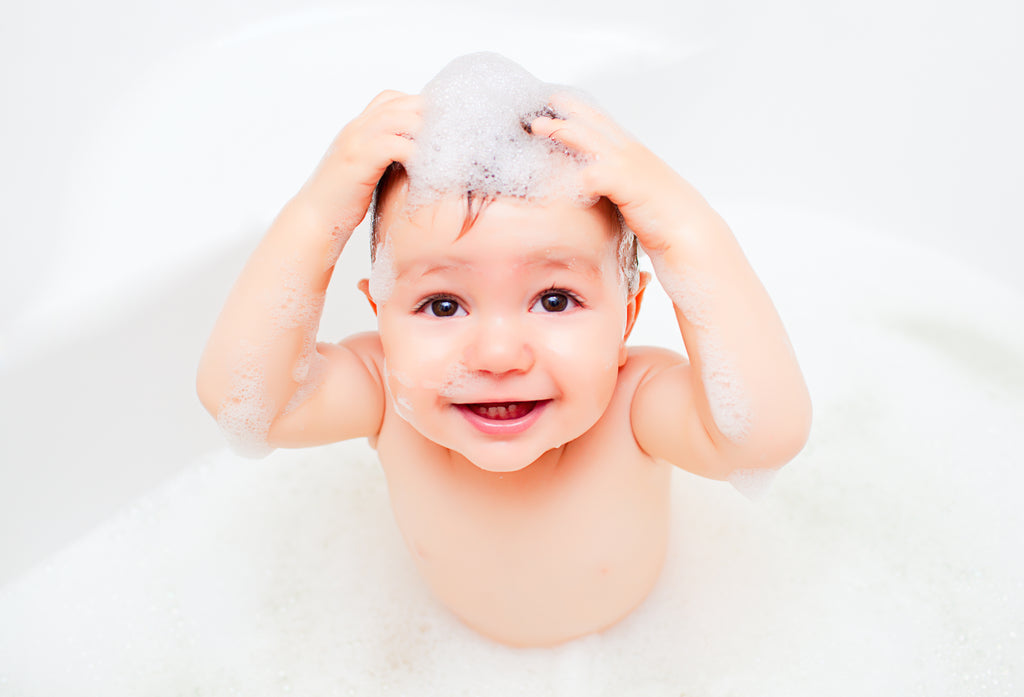Tear free shampoo? Does it work? For babies only?
If a "no tear shampoo" doesn't contain anesthetics (as urban legend suggests), then why doesn't it sting sensitive orbs? The answer lies in a few subtle changes in chemical formulas.
Adult and baby shampoos contain surfactants (short for "surface active agents"). One end of the surfactant molecule is attracted to water, the other is repelled by water but attracted to oily substances. Surfactants work by reducing the surface tension of a liquid, allowing the shampoo to spread and penetrate better, and remove the thin layer of oil known as sebum from the hair and scalp . Most baby shampoos use detergents with long chain surfactants, such as sodium trideceth sulfate or nonionic polymers that are less harsh than normal detergents, and they use only small amounts of these cleansers in their shampoos.
Tear-free formulas also leave out surfactants such sodium lauryl sulfate, which can be irritating to the eyes and scalp. This does create a trade-off, though. Sodium lauryl sulfates – formed in part from coconut fat or palm kernel oil -- are the chemical agents in shampoos that get hair really clean (and give a nice lather). Although tear-free shampoos still clean hair, they don't remove oil as thoroughly. But since most babies don't do more than look cute and occasionally smear food into their hair, this usually works out just fine.
Keep this in mind, though: The purest shampoo out there doesn't necessarily mean you won't see any little tears at bath time.
Your baby's bathwater – without the use of baby soap or shampoo -- could still cause tears. It all depends on the pH level of the water, which is a measurement of the free hydrogen and hydroxyl ions in the water. A pH level measures water on a scale of 0 to 14, with 7 being neutral. If the number drops below 7, the water is increasingly more acidic, which means it has a greater amount of free hydrogen ions. Above 7, and the water is increasingly less acidic (or more basic), which means it has a greater number of free hydroxyl ions. The pH range for human eyes is 6.5 to 7.6, with 7 being optimal. Any variation from neutral may cause your baby's eyes to tear, and it has little to do with the tear-free shampoo.
THE HISTORY OF SHAMPOO
The first shampoos were simple affairs of water, soap and baking soda (sodium carbonate) mixed by British hairdressers in the 1920s. They called the mixture, "champo," a take on a Hindi word for massaging or kneading.
Author's Note: Why doesn't tear-free shampoo sting your eyes?
I have a confession. Something happened the moment I read "Why doesn't tear-free shampoo sting your eyes?" And it was an internal dialogue answer that went something like this: "because manufacturers use the same eye-burning ingredients in adult shampoos and sneak in anesthetics so babies don't feel it." Turns out, by the time I'd done oh-about-10-minutes-of-research, I knew I'd fallen victim to urban legend, too. How embarrassing.
Here at Elizabeth Parker Naturals, we use no such thing as anesthetics, we simply use more organic and natural ingredients. Our baby Shampoo is for Babies, and the pH of the Babies skin is slightly higher than an adult. If you are using baby shampoo, you may find it drying to your adult scalp. Your pH is much more acidic (lower), so leave the baby shampoo to the baby, and buy one of our great shampoos.

